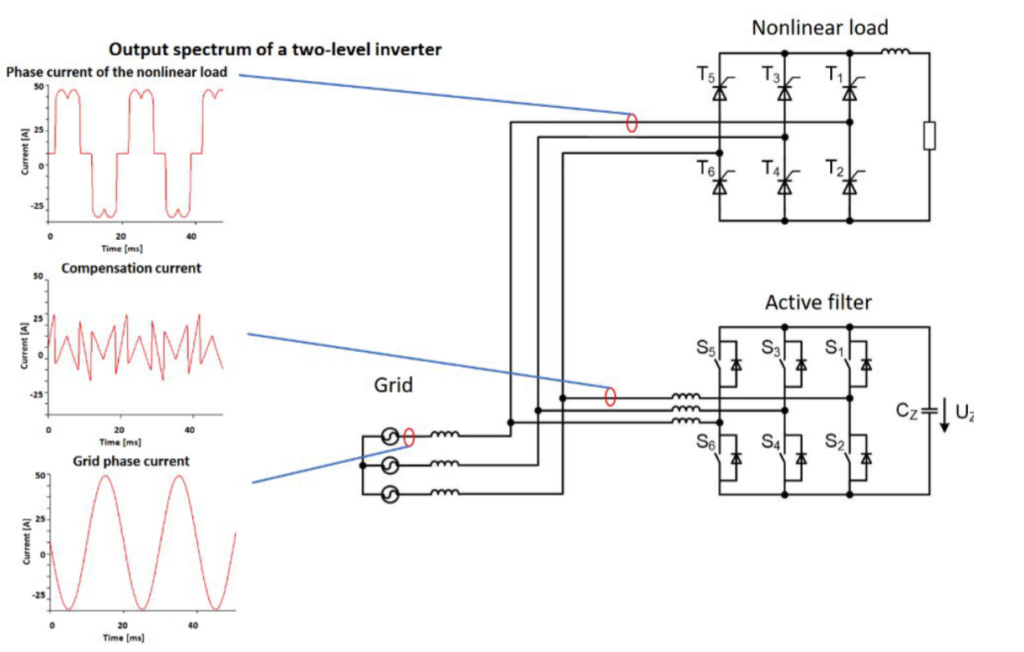
Active filters for nonlinear and non-symmetric loads allow compensation of their negative effects for the grid near to the Point of Common Coupling (PCC).
This project — funded by the BMBF ([deutsches] Bundesministerium für Bildung und Forschung) and Siemens AG (Department: “Research in Energy and Electronics, Power Electronic Systems”) — is in collaboration with the “Labor für Leistungselektronik (LLE, engl.: Laboratory for Power Electronics, Prof. Dr.-Ing. Marek Galek, HM).
Problem statement
Nonlinear loads and sources are omnipresent in modern grid-connected applications. Especially multiphase grid connected inverters and switched-mode power supply units affect the grid in a negative way with their switching behaviour (during sinking and sourcing operation). Additionally, passive and active nonlinear loads like single or multiphase rectifiers elicit also harmonic distortion of the grid voltage beyond the PCC with their nonlinear current consumption. Combined with asymmetricity — caused by single phase loads which are not equally distributed over the lines — and individual power-factors, negative consequences for the reliability and quality of electrical energy and the power grid are obvious. Those disturbances on the grid voltage can damage other grid connected devices or the grid itself. Avoiding this scenario is preferrable and this project’s results will be a step in this direction.
Project description
To improve the grid-voltage quality and reliability, an intelligent active filter is developed within this project. This includes different research areas which are distributed between LLE and LMRES. From the power-electronic-point of view, a suitable system topology, an appropriate inverter technology and a matching switching pattern is required. Supplemented by adequate controller and observer algorithms, the major tasks are named. Combining the partial results, an “Add-On” for nonlinear loads is created which “transforms” the nonlinear load into a linear system regarding to its effects on the grid, visible at the PCC.

